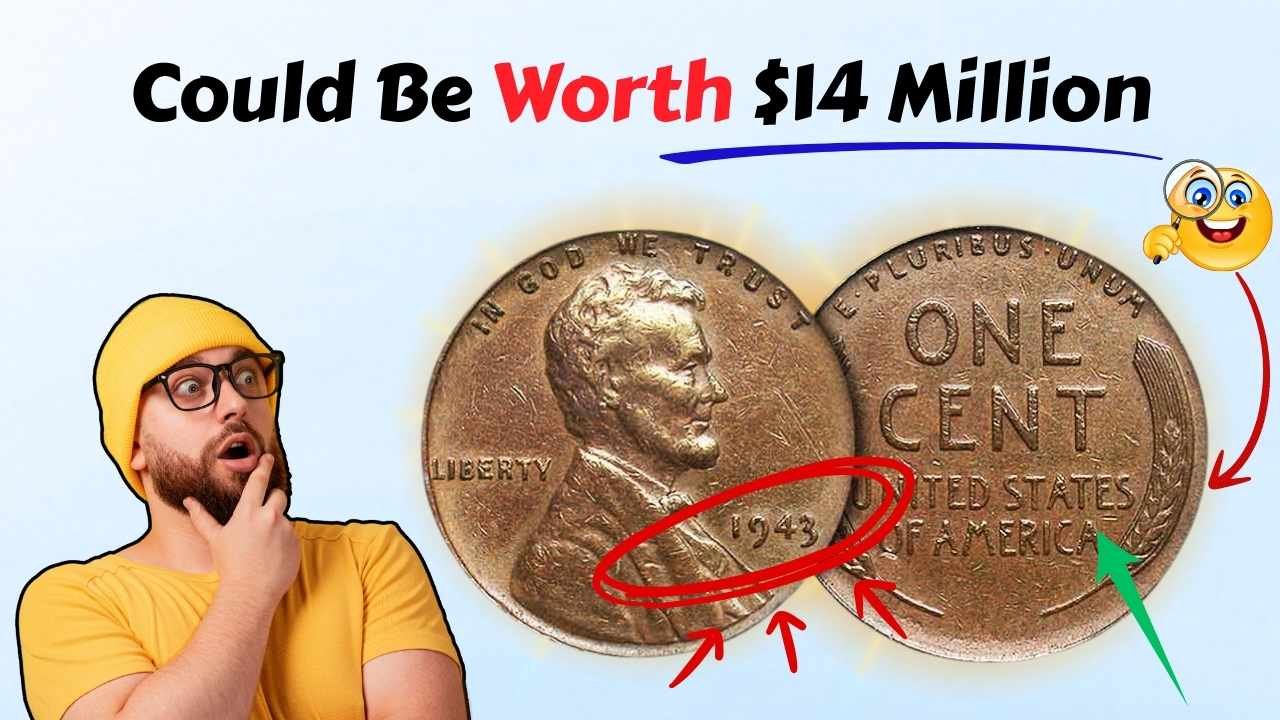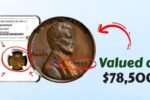Join on WhatsApp
Get the latest updates directly on WhatsApp – motivation, news & more!
Have you ever rifled through an old jar of coins and thought, “Could one of these be worth more than I think?” Imagine this: a dusty Lincoln Wheat Penny, the kind that’s been sitting in your drawer for decades, could secretly be a multi-million-dollar find. Yes, even in today’s circulation, one of these tiny coins could make a collector’s dream come true.
In this article, we’ll dive into the fascinating story of the Lincoln Wheat Penny, why some are worth a fortune, and how you might spot one yourself. Keep reading you may never look at your spare change the same way again.
What Is a Lincoln Wheat Penny?
The Lincoln Wheat Penny is a one-cent coin that was minted between 1909 and 1958. On the front, you’ll see Abraham Lincoln’s iconic profile; on the back, two wheat stalks give it its nickname. Most of these pennies are worth just a cent, but certain rare dates or mint errors have made collectors reach into their wallets sometimes paying staggering sums.
What makes this coin historically significant? It was the first U.S. coin to feature a real president, designed by Victor David Brenner. His initials “VDB” sparked controversy, making some early pennies exceptionally rare. For anyone curious about coin collecting, the Wheat Penny is often the perfect starting point.
A Brief History of the Wheat Penny
The year 1909 marked Lincoln’s 100th birthday, prompting the U.S. Mint to replace the Indian Head cent with this new design. The first pennies bore Brenner’s initials “VDB” on the reverse, which caused an uproar and led the Mint to quickly remove them. That short production run made the 1909-S VDB penny a prized rarity today.
Over the decades, the wheat penny endured wars, economic shifts, and even temporary metal changes like during World War II, when steel briefly replaced copper. By 1959, the Wheat Penny design gave way to the Lincoln Memorial design, but these coins remain a window into early 20th-century America.
Why Some Wheat Pennies Are Worth Millions
Today, rare coins are all about scarcity and condition. A pristine Wheat Penny with a unique mint error can fetch mind-blowing sums because there are so few in existence. Auctions for these coins often see bids soar, driven by passionate collectors.
The $14 million figure you may have heard? That’s largely attention-grabbing, but coins like the 1943 bronze Wheat Penny can approach multi-million-dollar values. Even “lesser” rarities hold investment potential, blending historical significance with financial allure.
How to Spot a Valuable Wheat Penny
Ready to go treasure hunting? Start simple:
- Check your jars of change or bank rolls. Wheat pennies still occasionally circulate.
- Look closely at dates and mint marks. “S” indicates a San Francisco mint; “D” is Denver.
- Inspect for errors. Misprints, doubled dies, or unusual metals can be worth a lot.
- Use resources. Apps and online guides help identify potential treasures.
- Join a community. Coin clubs and online forums are full of tips and insights.
Professional grading services like PCGS or NGC can authenticate your finds, ensuring you get top dollar if you ever sell. Many collectors have struck gold from coins hidden in old piggy banks or attics.
Rare Lincoln Wheat Penny Facts
Here are some of the most remarkable Wheat Pennies that have fetched huge sums:
| Rare Wheat Penny | Key Feature | Auction Record | Notes |
|---|---|---|---|
| 1909-S VDB | First-year rarity | $168,000 | Brenner initials controversy |
| 1914-D | Low mintage | $159,000 | Denver mint scarcity |
| 1943 Bronze | WWII copper error | Up to $1.7M | Fewer than 20 known |
| 1955 Doubled Die | Obverse doubling | $124,000 | Famous mint mistake |
| 1958 Doubled Die | Final-year error | $336,000 | Collector favorite |
Even if you don’t find the $14 million penny, these examples show how history and rarity combine to create exciting opportunities.
Expert Tips for Aspiring Collectors
- Always handle coins carefully cotton gloves are ideal.
- Avoid cleaning them; it can drastically reduce value.
- Store in albums away from sunlight and moisture.
- Start small with certified coins to learn the ropes.
- Track market trends online and consult experienced dealers.
Condition is everything: higher grades like MS-65 or better multiply the coin’s value. The hunt is just as thrilling as the find!
Frequently Asked Questions
Q: Is a $14 million Lincoln Wheat Penny real?
A: Not exactly. The hype centers around ultra-rare coins like the 1943 bronze penny, which can sell for up to $1.7M. Still, multi-million-dollar possibilities exist in rare cases.
Q: How do I know if my penny is valuable?
A: Check the date, mint mark, and for errors. Guides from PCGS or NGC can help.
Q: Are Wheat Pennies still legal tender?
A: Yes, they’re U.S. currency, although collectors value them far above face value.
Q: Where can I sell a rare penny?
A: Auctions like Heritage or Stack’s Bowers, or local coin dealers.
Q: Common mistakes collectors make?
A: Cleaning coins is a big no-no it ruins the value.
Conclusion
From honoring Lincoln to sparking multi-million-dollar excitement, the Lincoln Wheat Penny proves even the smallest coins can hold enormous historical and monetary value. Whether you’re a collector, investor, or hobbyist, diving into spare change could uncover a hidden treasure. Grab a magnifying glass, check those old jars, and maybe you’ll be the next lucky find!



